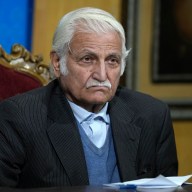Every year we see little advertised schools make runs in the NCAA tournaments and transform to America’s darlings.
This year we have witnessed something that has not been done before by a mid-major program as the Butler Bulldogs have done the impossible in returning to the Final Four.
Mid-major is term that has evolved to describe success stories from non-power conference teams; i.e. teams outside the six major conferences in collegiate sports (ACC, Big East, Big Ten, Big 12, Pac-10 and SEC). The ‘Big Six’ receive the television and sponsorship money; they pack large arenas and stadiums and generally have their pick with recruits. Power conference schools compete only with each other for players and generally debate the risk – reward of taking a great player, anticipating the use of this player for only one or two years before they enter the NBA draft.
Butler has been a breeding ground for coaching success. Three of their last four coaches played for Butler (Collier, Matta and Lickliter) and Matta, Lickliter and Stevens were Butler assistants before taking over as Butler Head Coach. Matta left Butler for Ohio State, Lickliter left Butler for Iowa which opened the door for Stevens. The only program that resembles Butler is Xavier that has seen tournament success take coaches Sean Miller, Skip Prosser and Pete Gillen to power conference schools. Current coach Chris Mack was an assistant for both Miller and Prosser and the programs has made the NCAA tournament the past four years under Stevens. They have been the blueprint for a mid-major achieving tournament success with upperclassmen outdueling big conference teams often led by freshman and sophomores.
The commonality of mid-major success in the NCAA tournament is a by-product of the NBA’s philosophy to get high potential players as young as possible to mold and the controversial rule to require players who wish to be drafted to become eligible one year after their high school graduating class. The first 21 players drafted last year (who went to college) did not complete four years of college basketball. The cycle of great players who enter college basketball (generally a power-conference team) who have success then leave for the NBA and are replaced by great recruits who become great players and then leave for the NBA is both the blessing and curse of success. This year’s Elite Eight was a great example of this in Kansas – Xavier Henry departs for the NBA and Josh Selby emerges and Kentucky who loses the likes of DeMarcus Cousins and John Wall (with three other underclassmen to the NBA) and they replace them with Brandon Knight and Terrance Jones. The opportunity created enables the star recruit to receive the opportunity to shine and those who shine brightest take their games to the next level – the NBA.
Generally the ride of the Mid-Major ends before the Final Four. Butler has been the exception and the large reason why is because they kept their coach – Brad Stevens who resisted several more lucrative offers to remain at Butler. The “haves”, power-conference institutions can pay their head coaches from mid-six figures to seven figure salaries and their assistants make considerably more than the lionshare of non-power conference head coaches.
Both Stevens and Smart will have difficult decisions ahead in regards to their future. They are currently in position to corral the top recruits in their league based on their program’s success. They have job security and will receive new contracts with increased pay. Shortly they will be offered millions more than they are presently paid to lead fledgling programs in ultra-competitive power conferences against hall of fame caliber coaches.
Thus is the plight of the mid-major program. Those fortunate enough to have a magical journey in March often lose their coach. They start over with a new coach, new recruits and if all goes well in three to four years when they become juniors and seniors they get an opportunity to do it all over again.
Leigh Klein is the owner of Five-Star Basketball Camps, which Michael Jordan, LeBron James, Carmelo Anthony and Kevin Durant all attended in high school. Klein and has overseen the development of more than 100 players in this year’s NCAA tournament. Check Metro daily during March Madness for more of his ramblings.
















